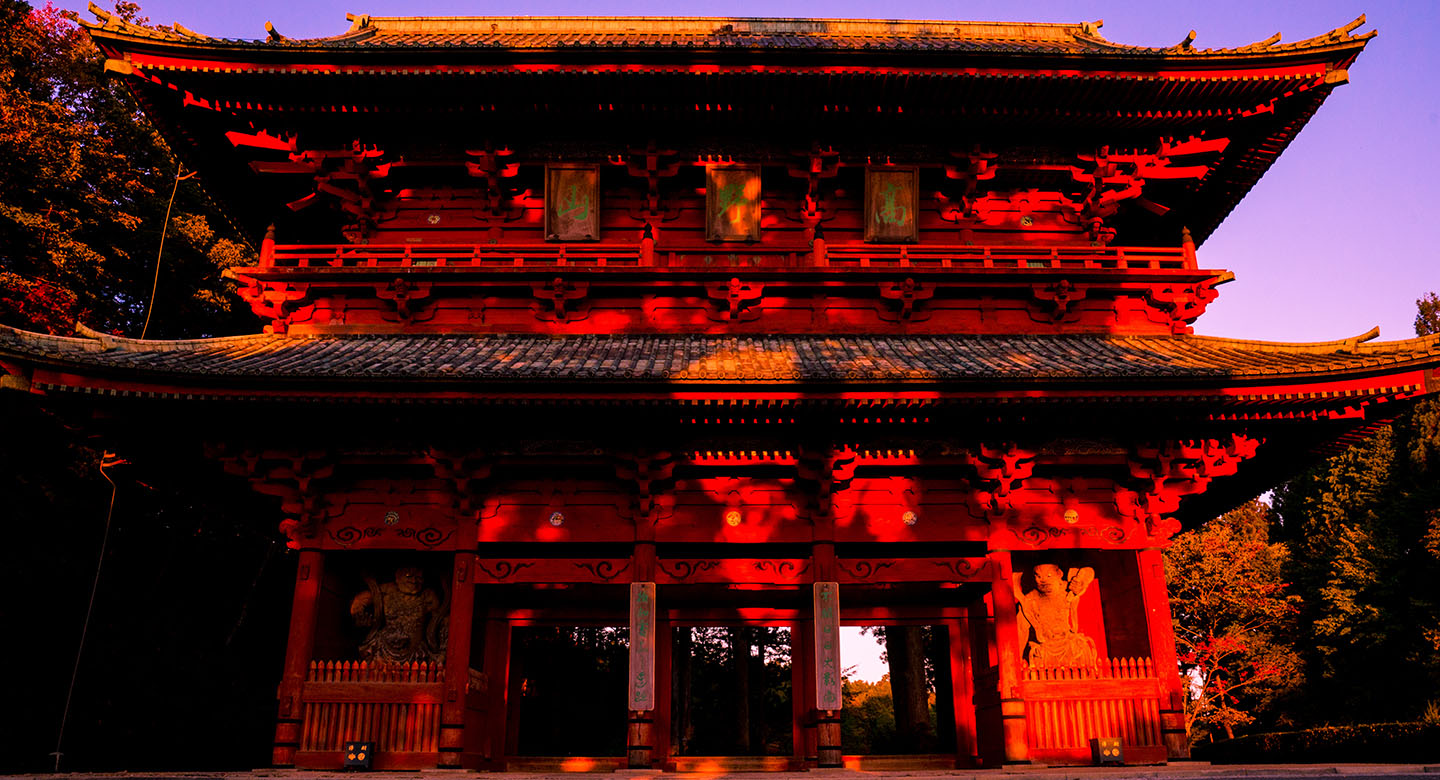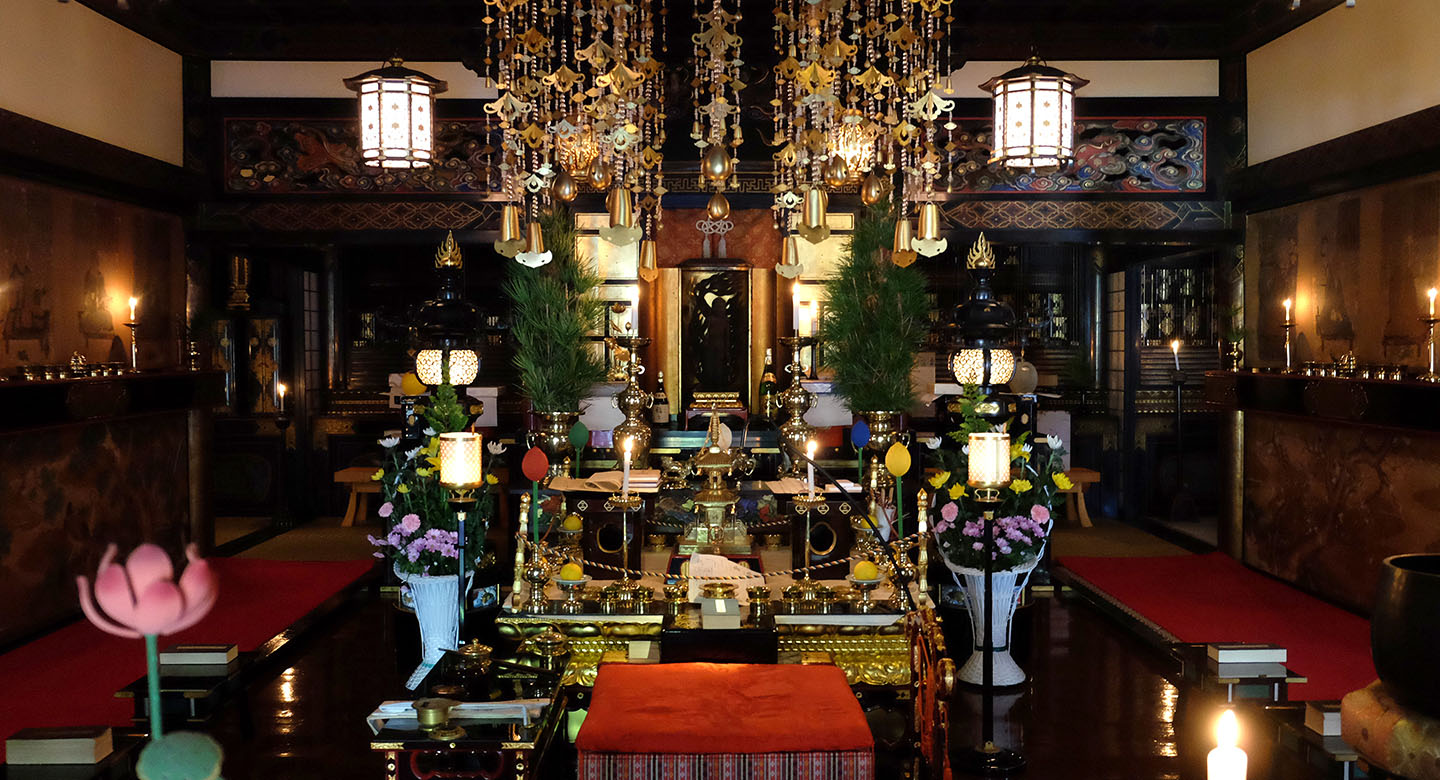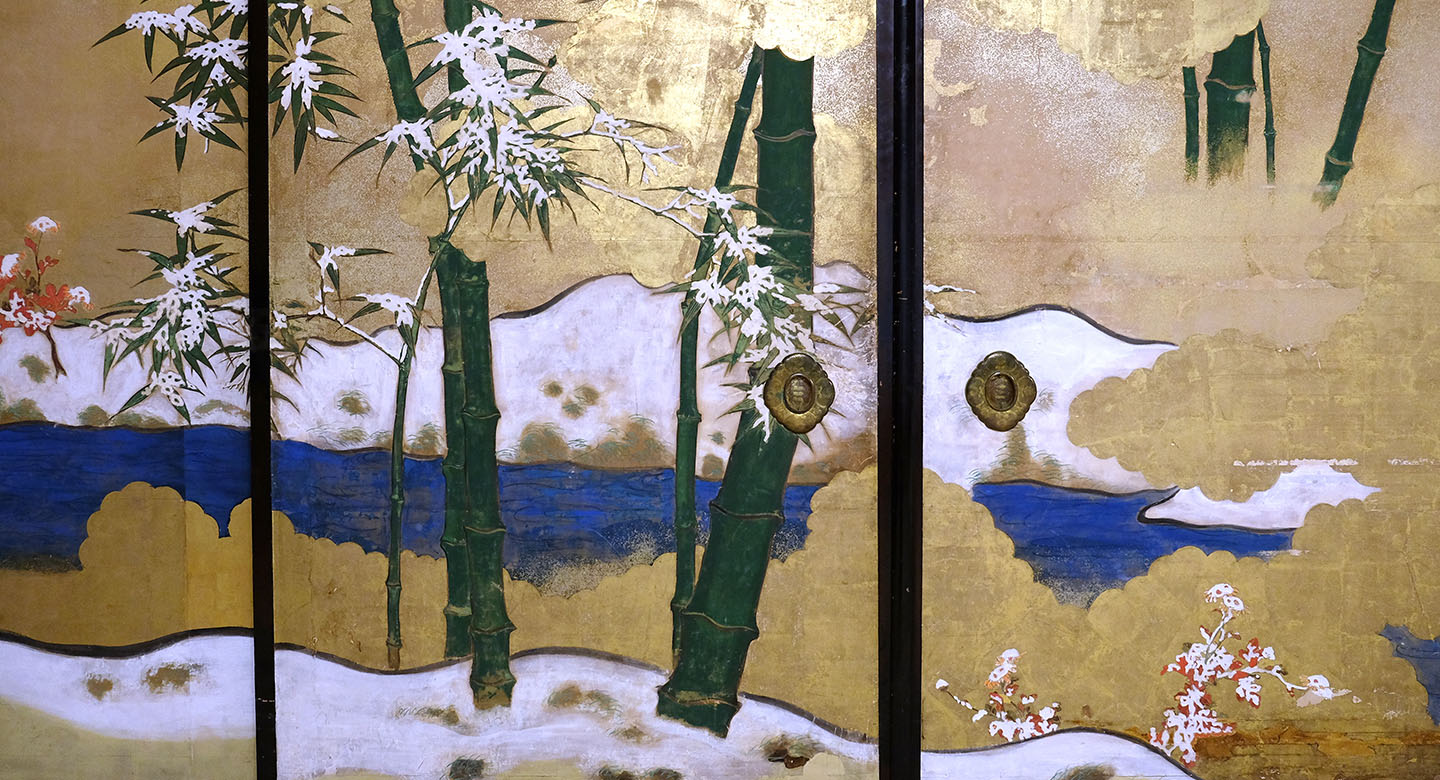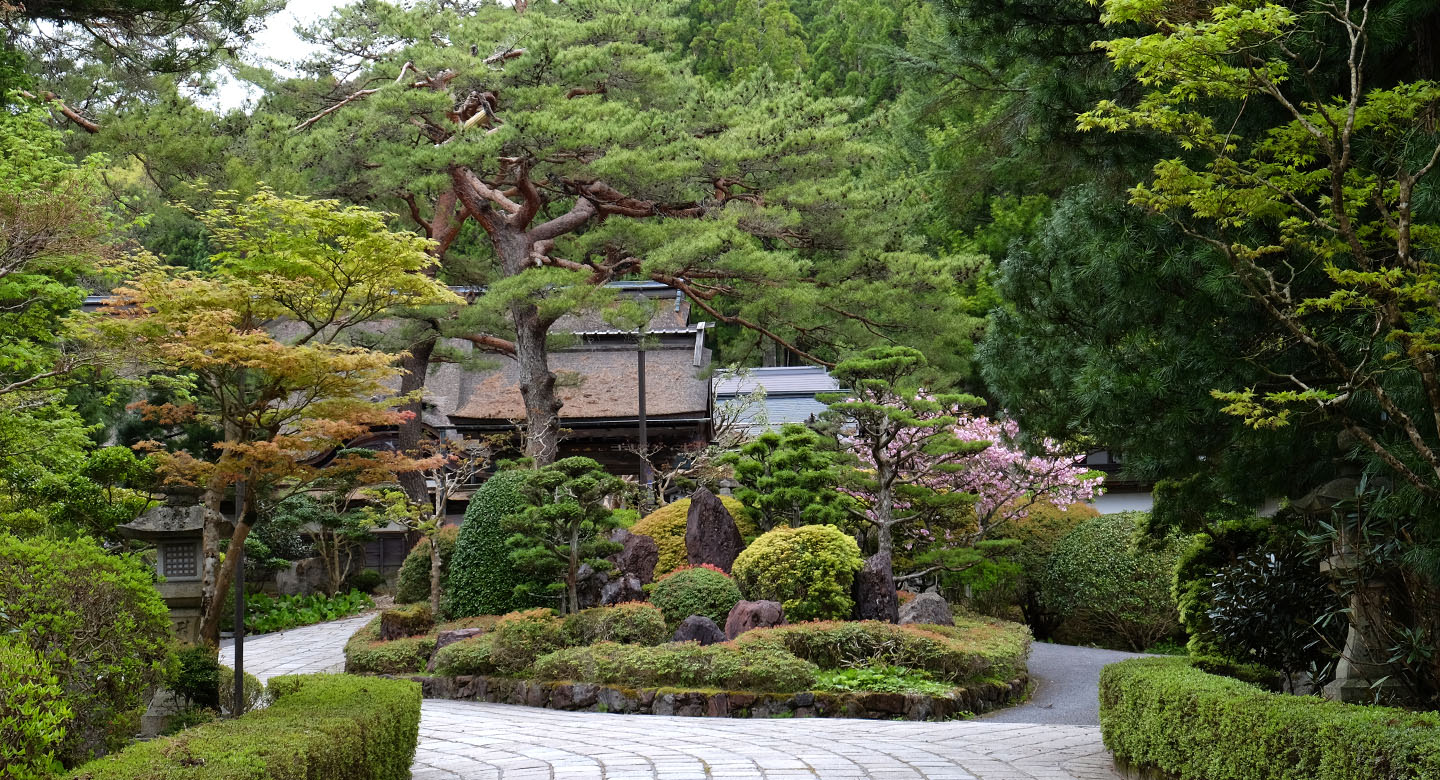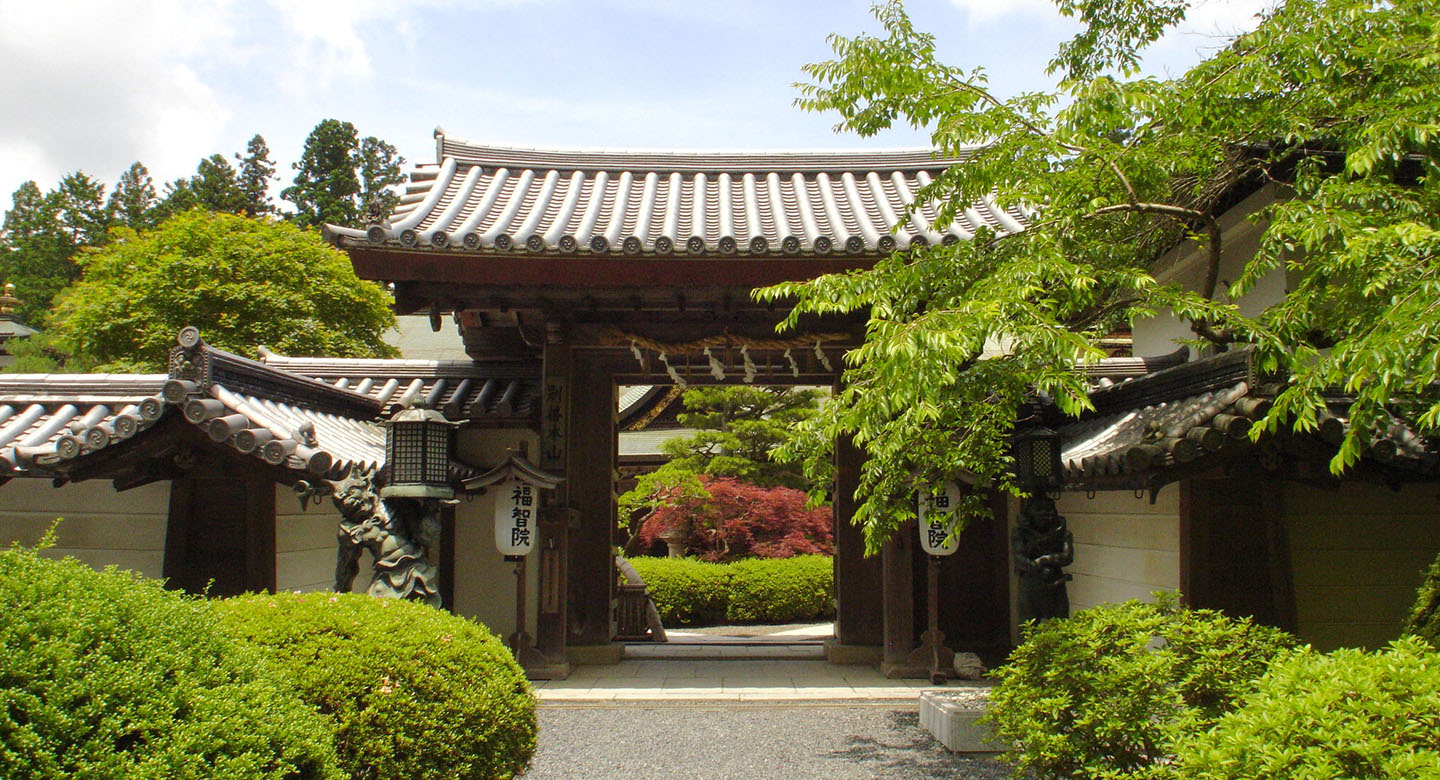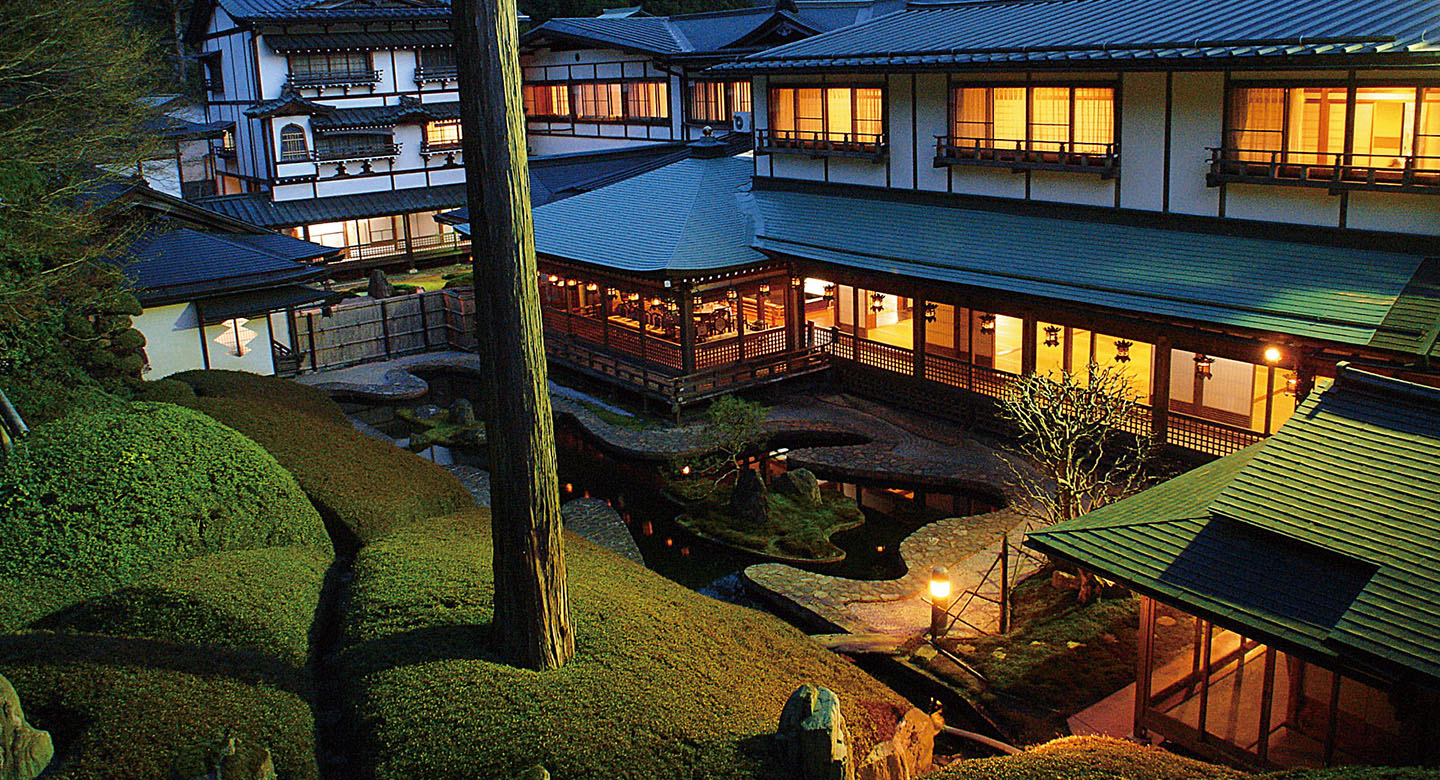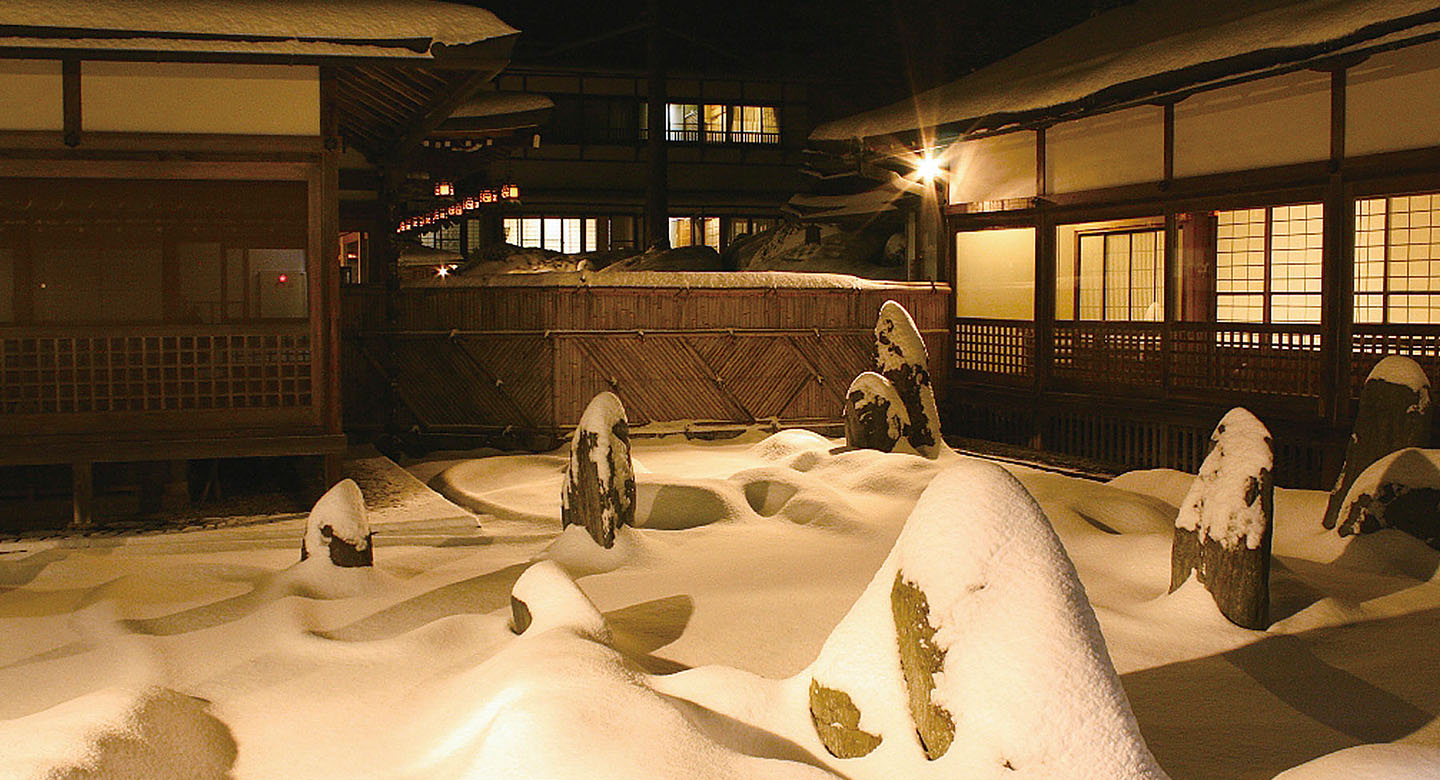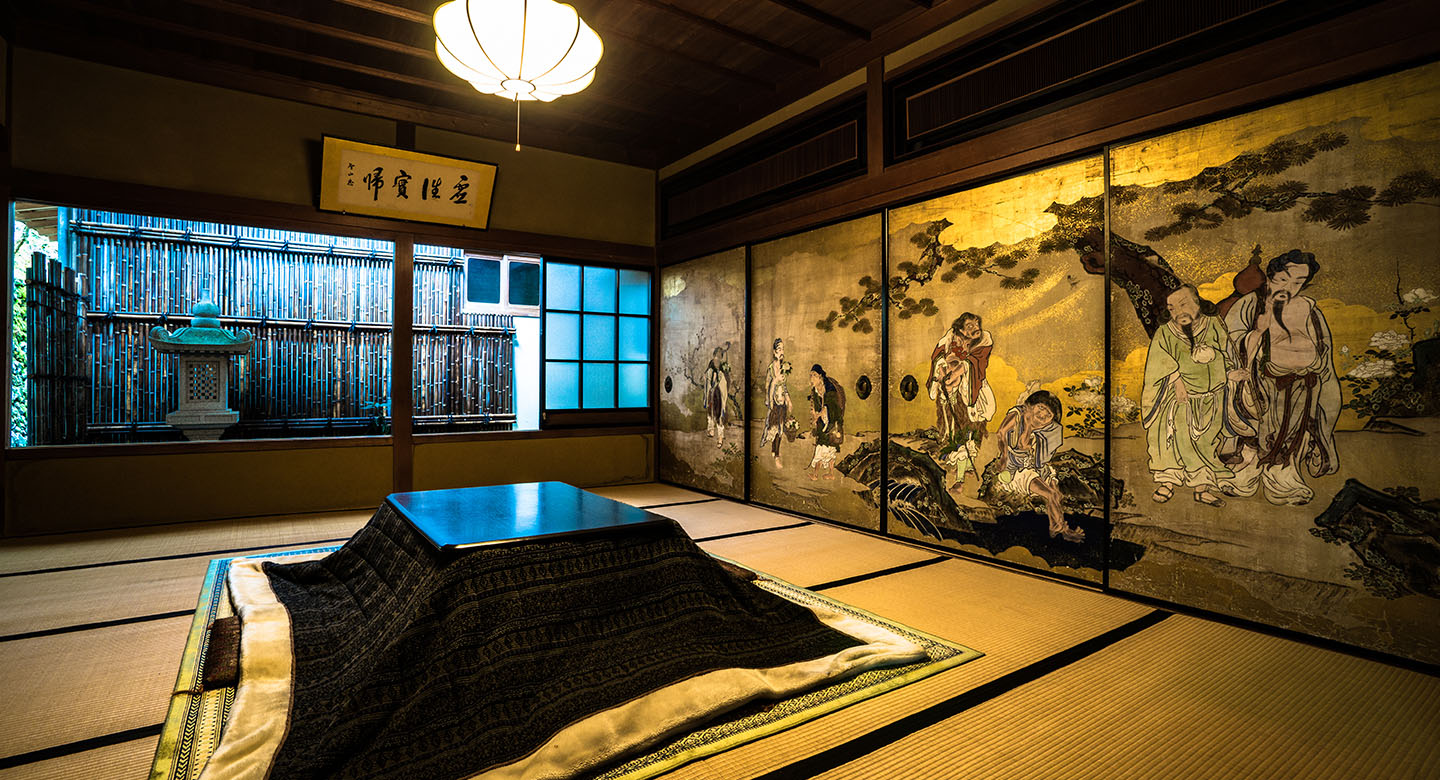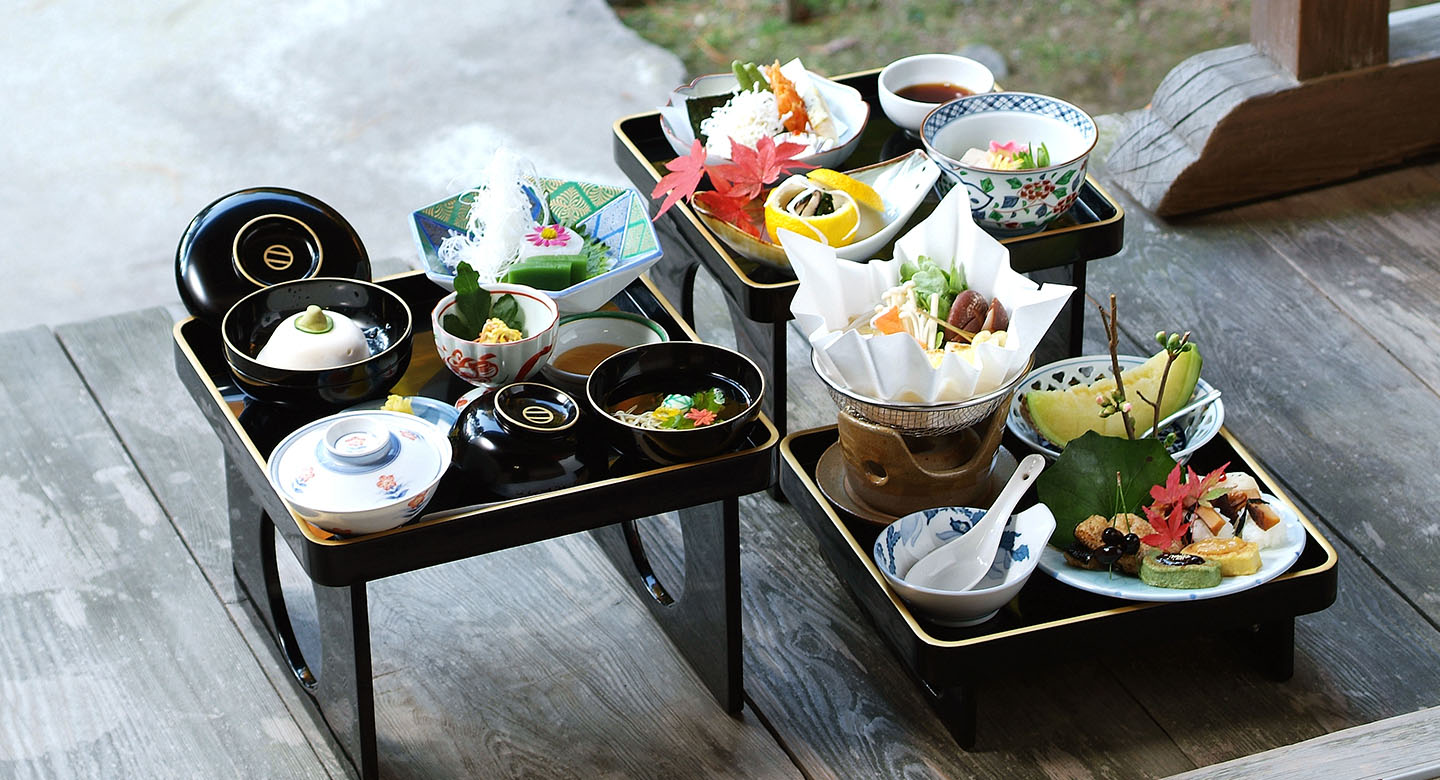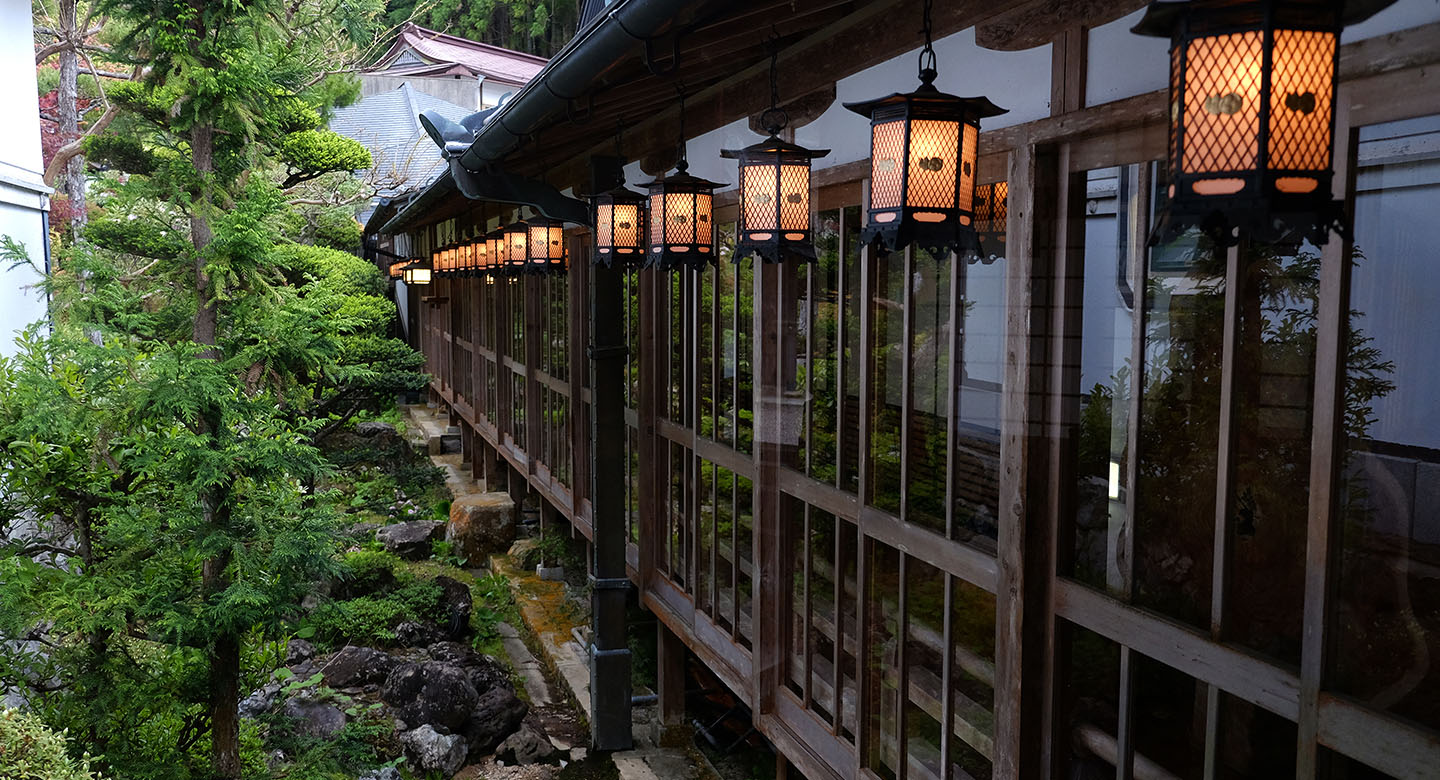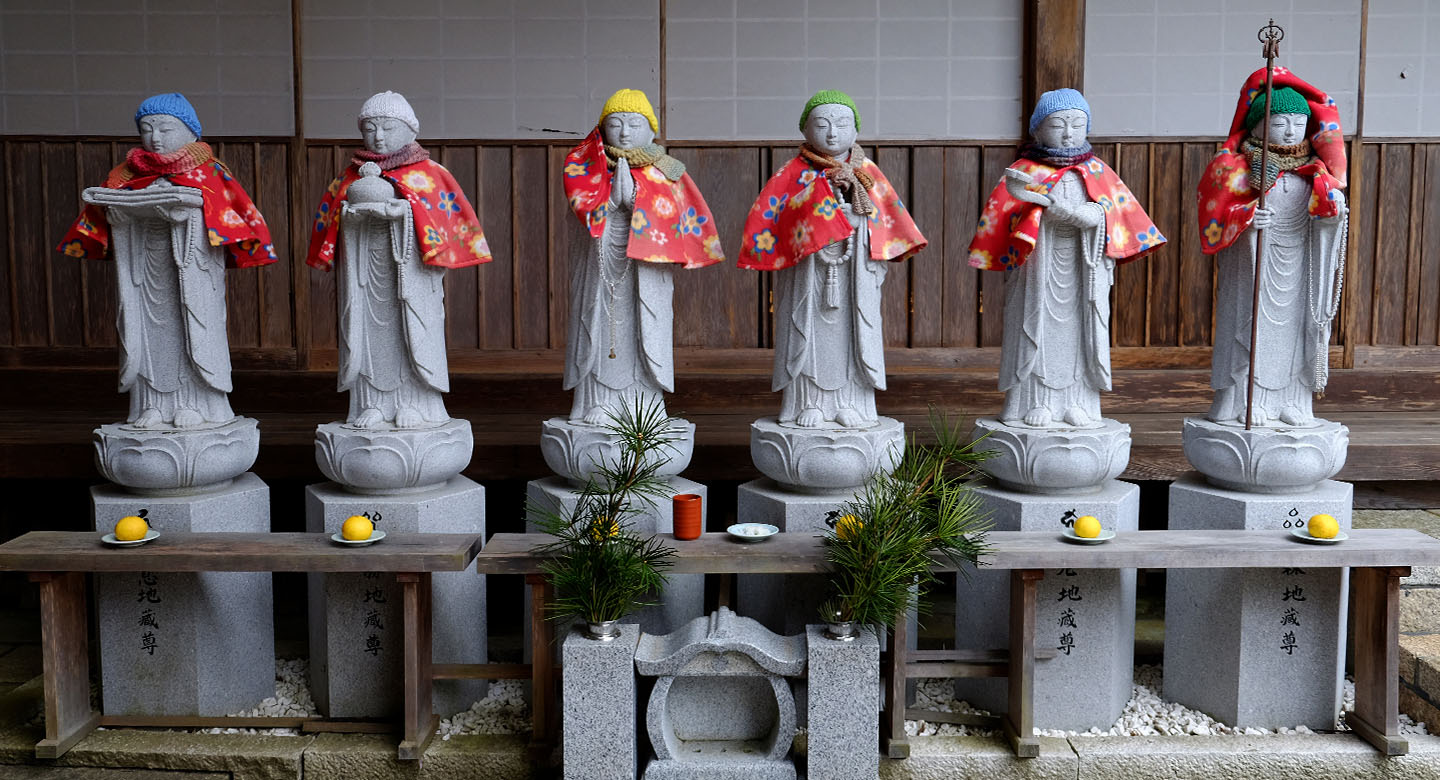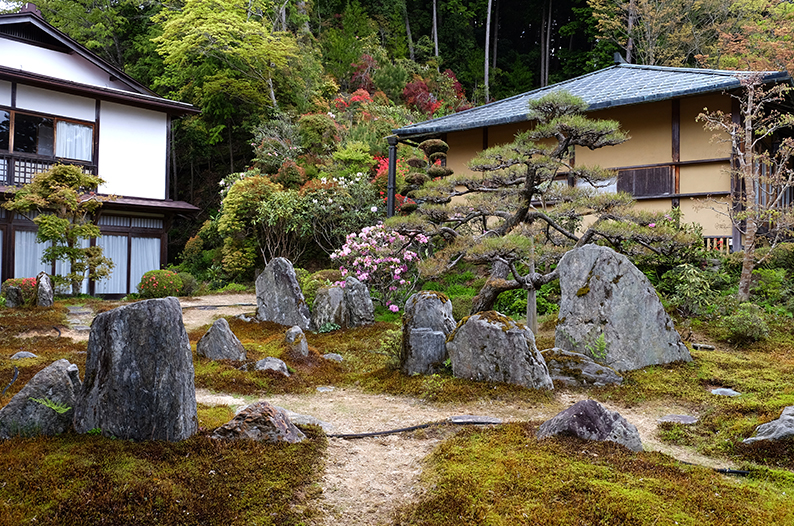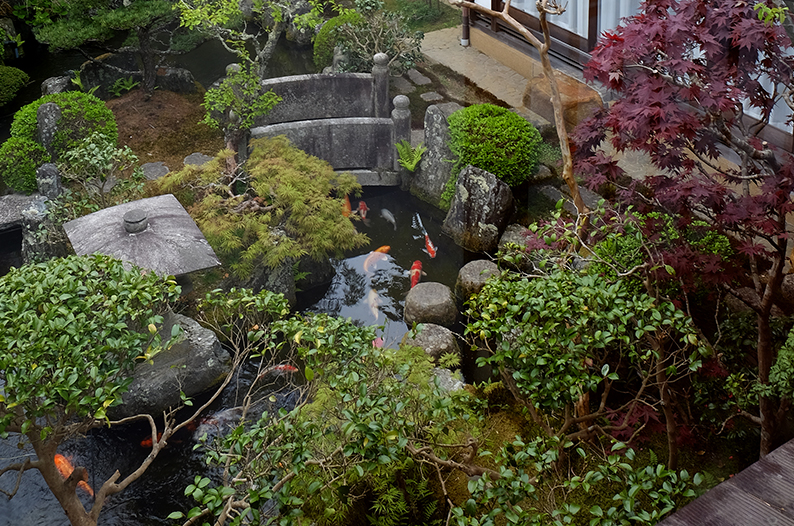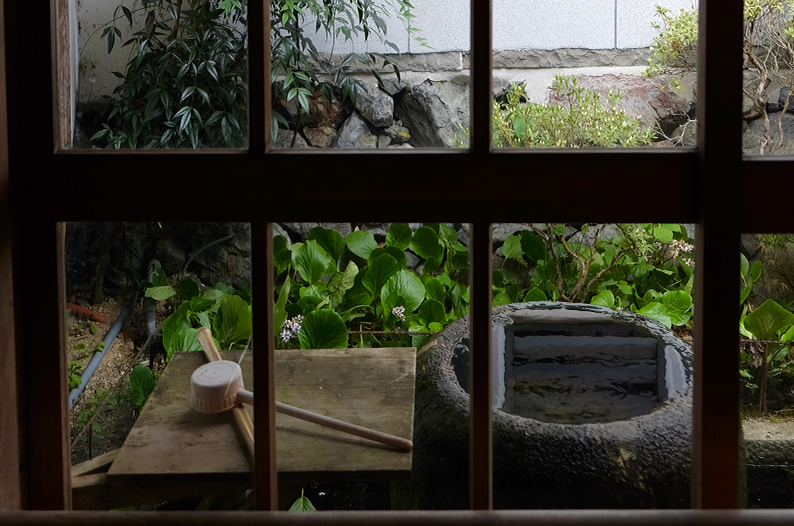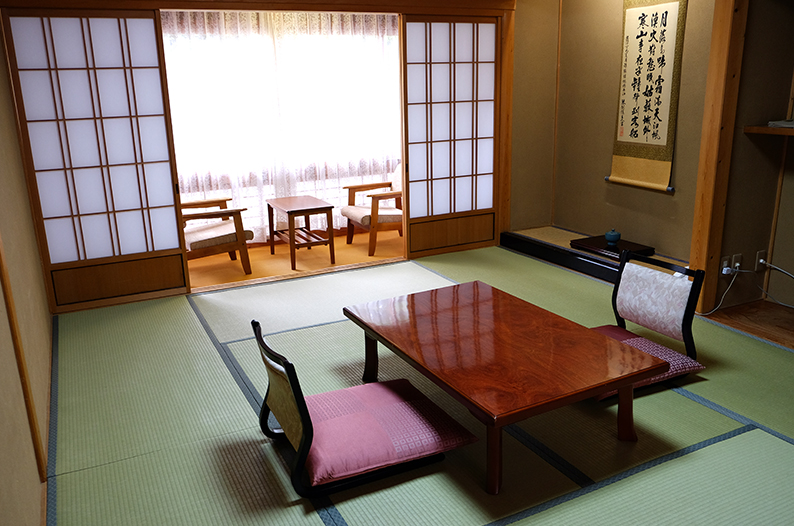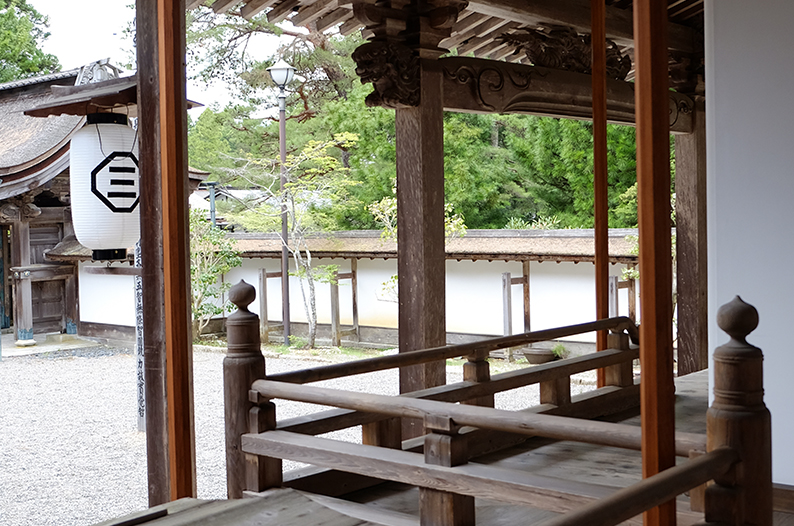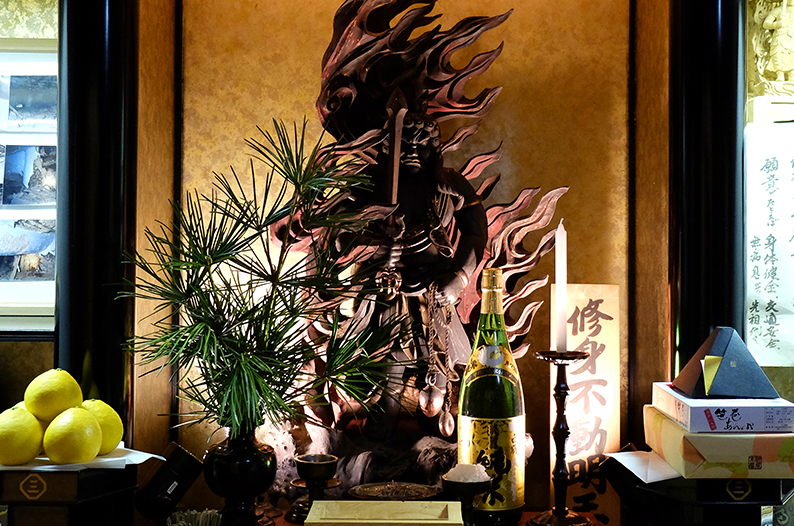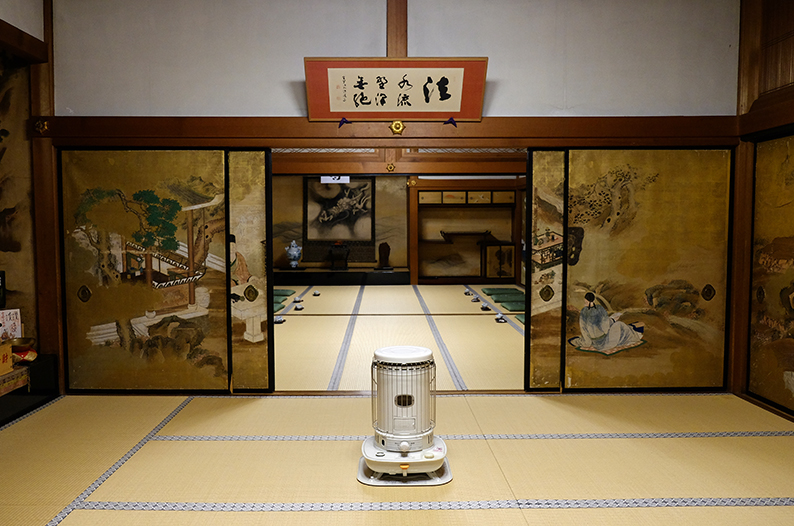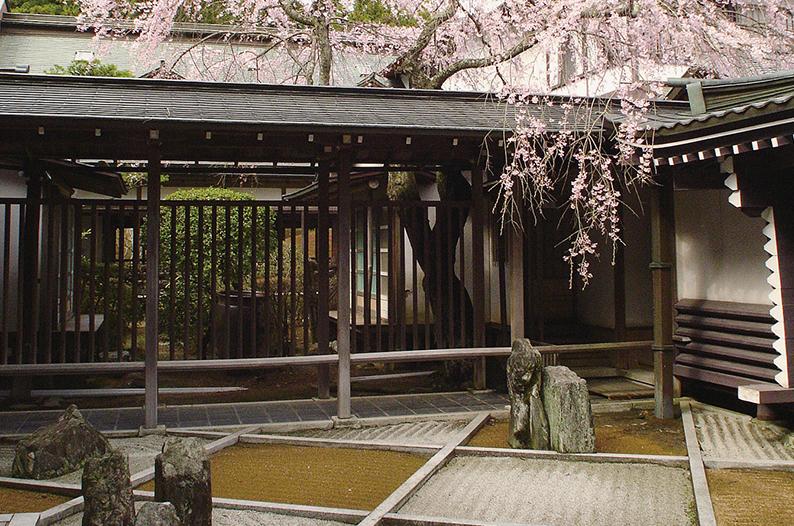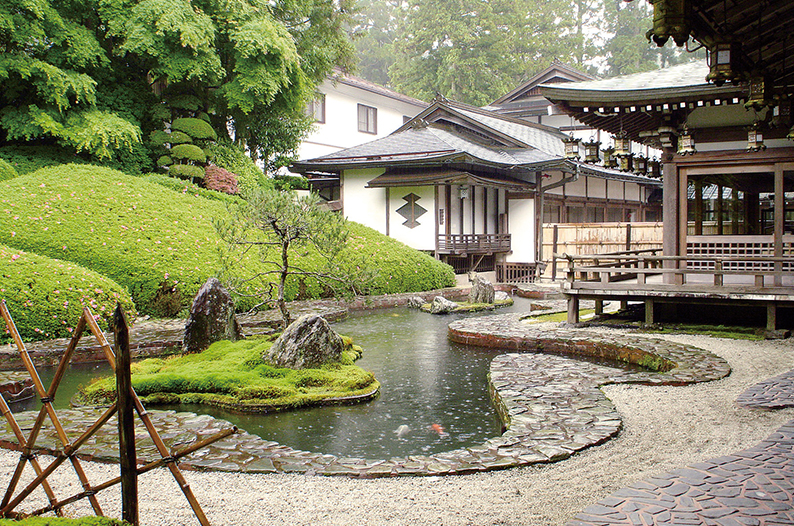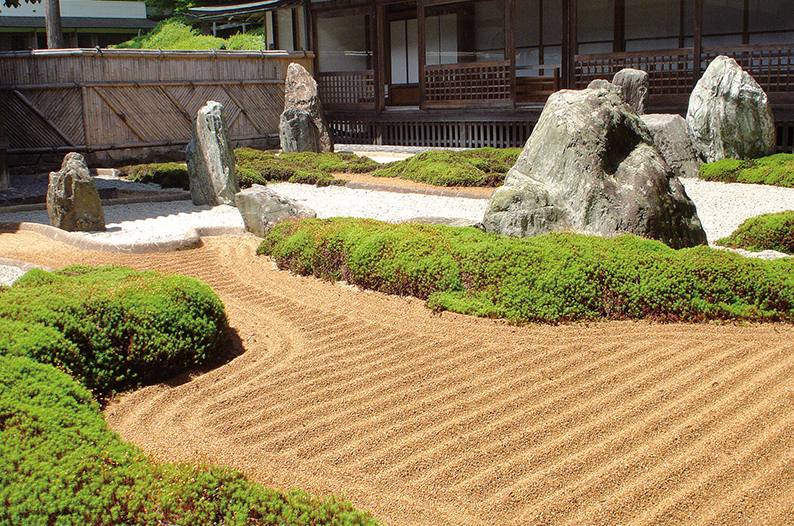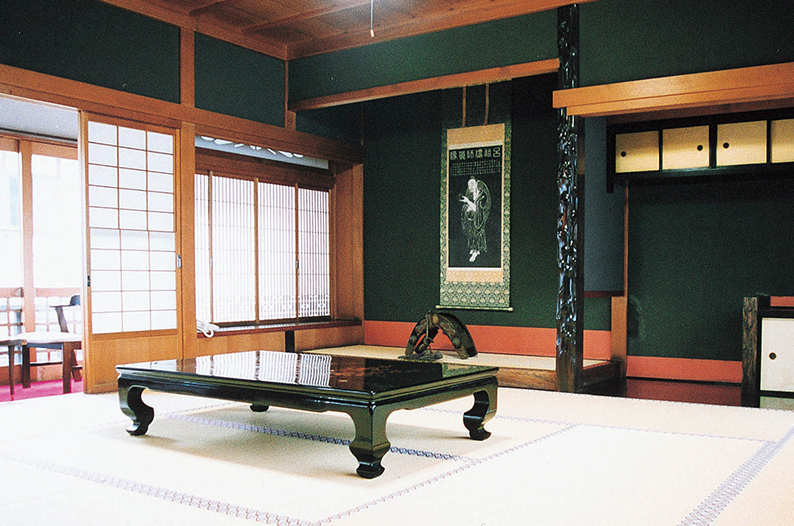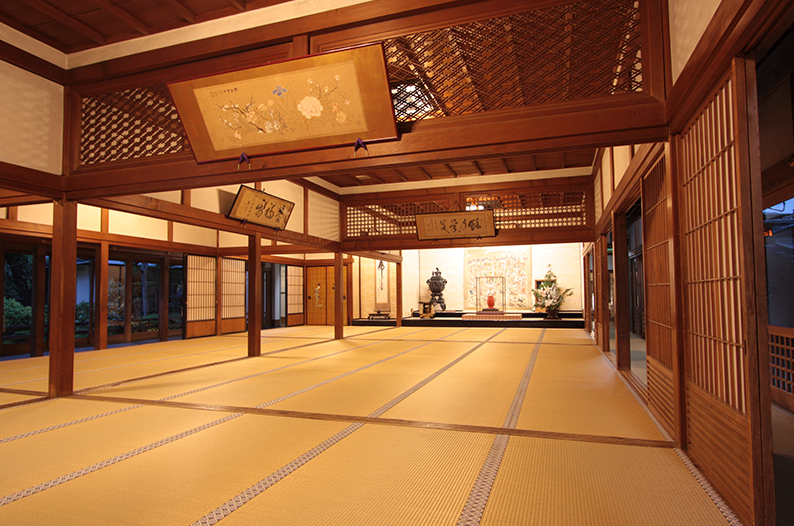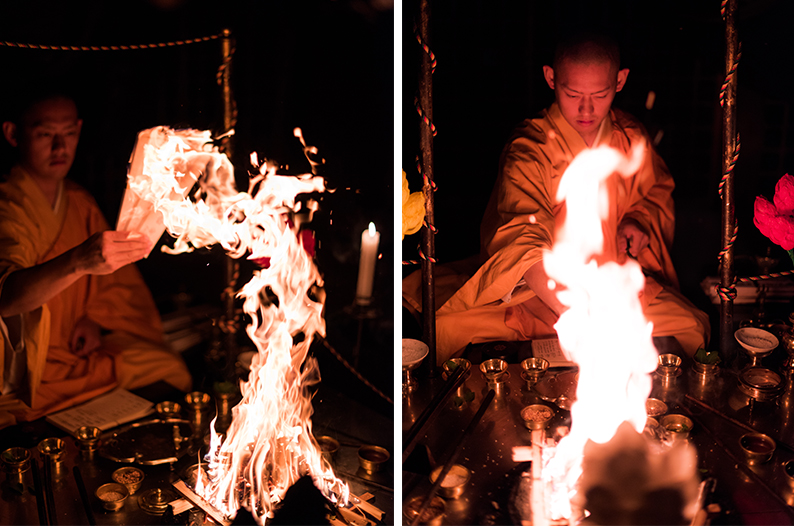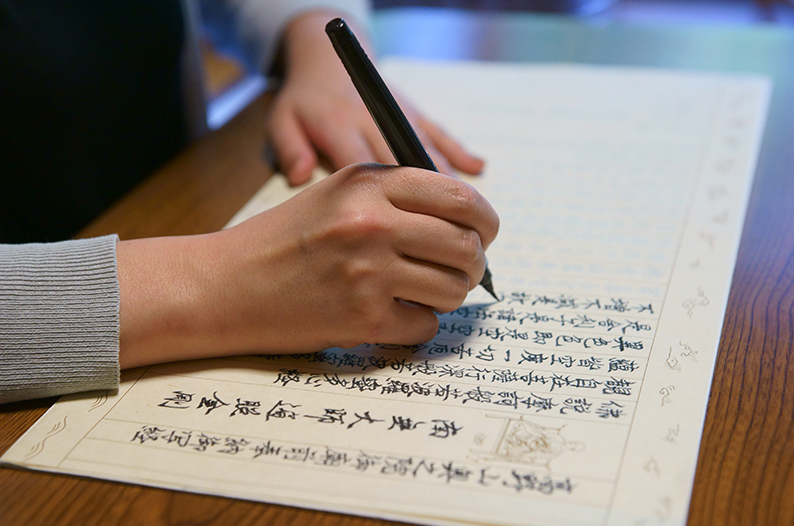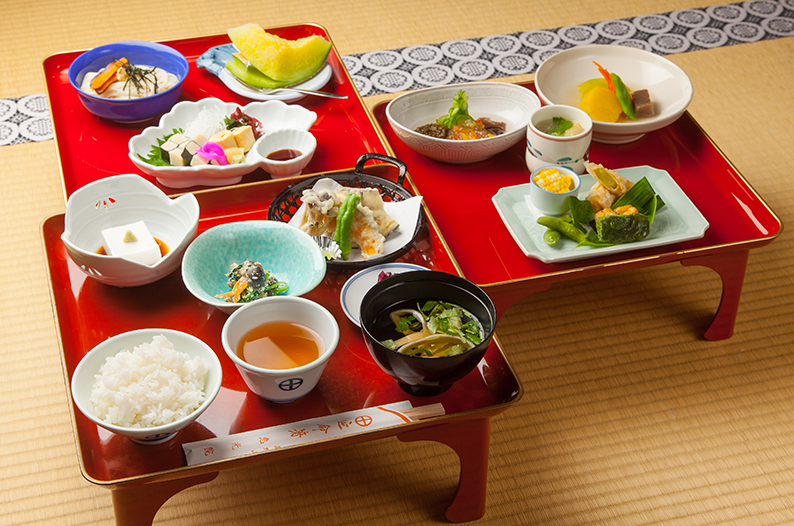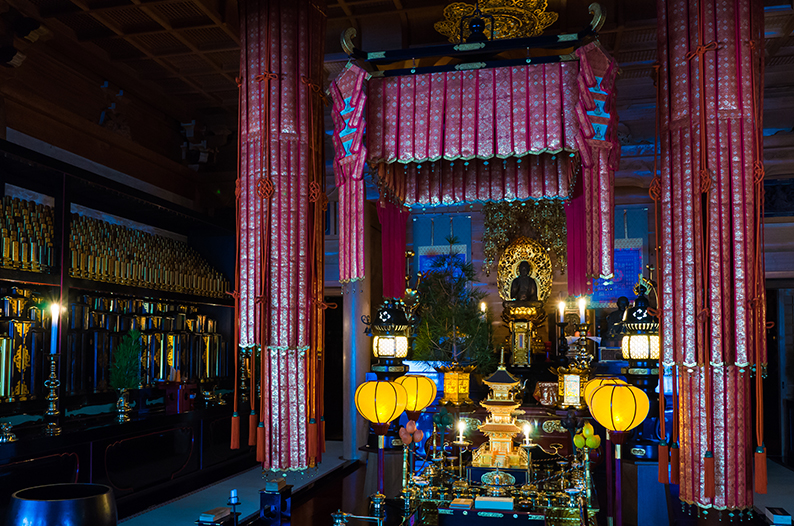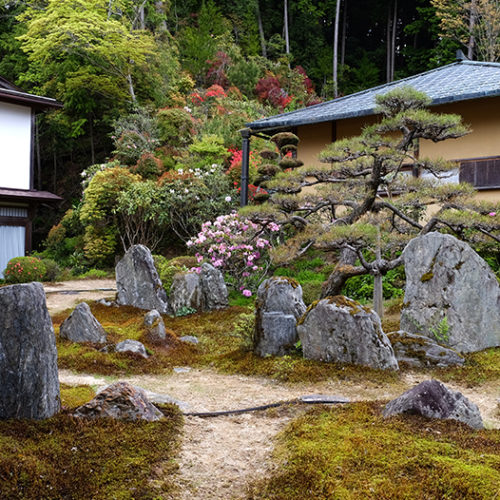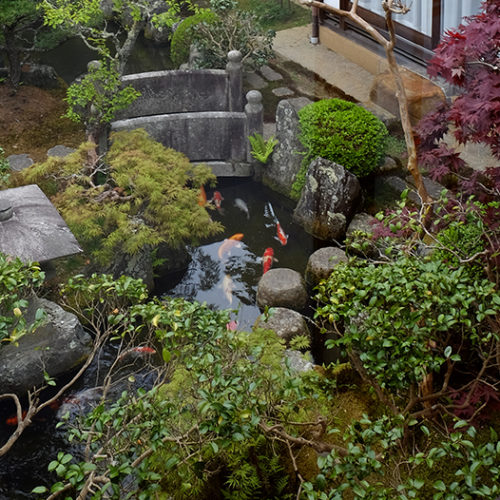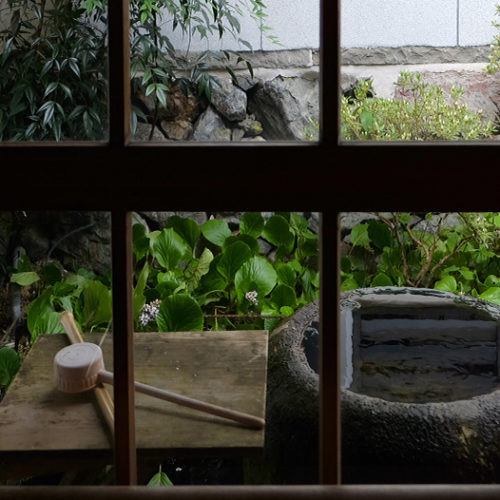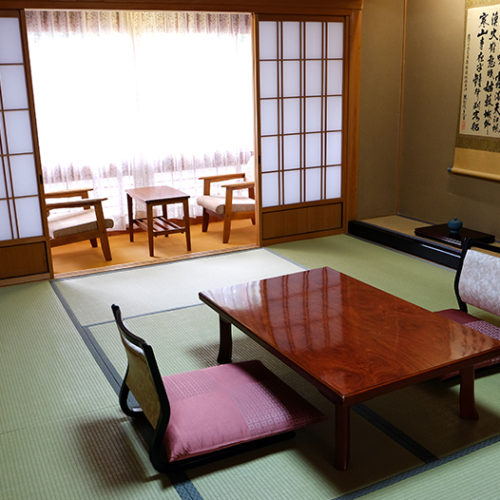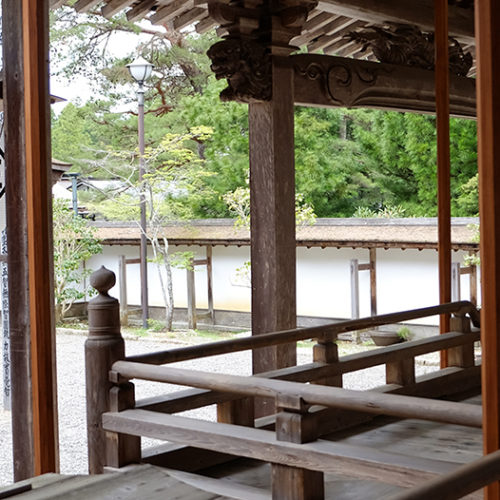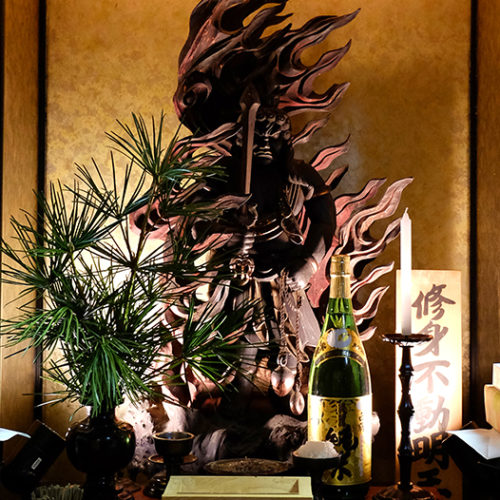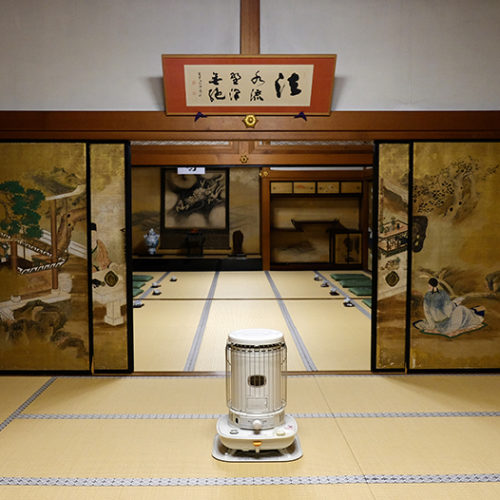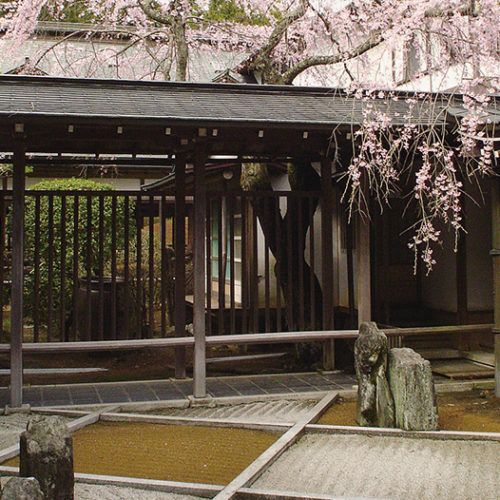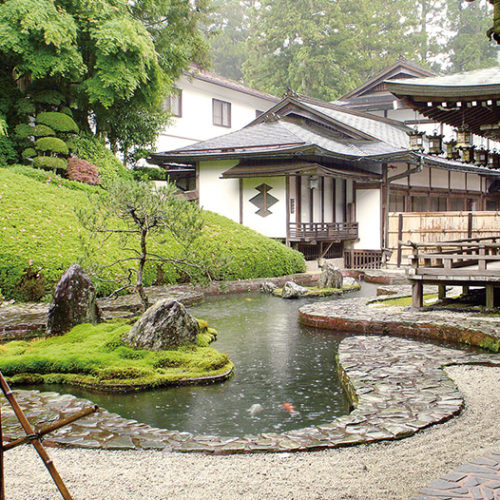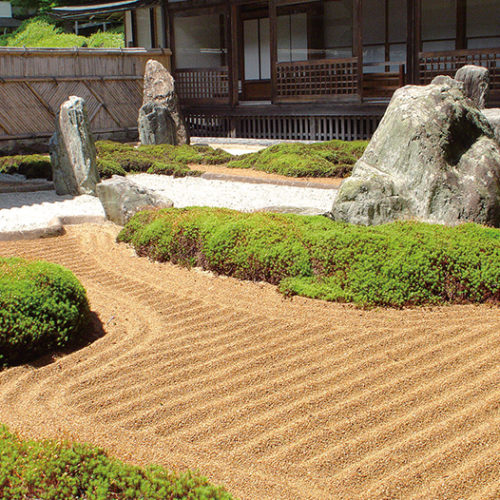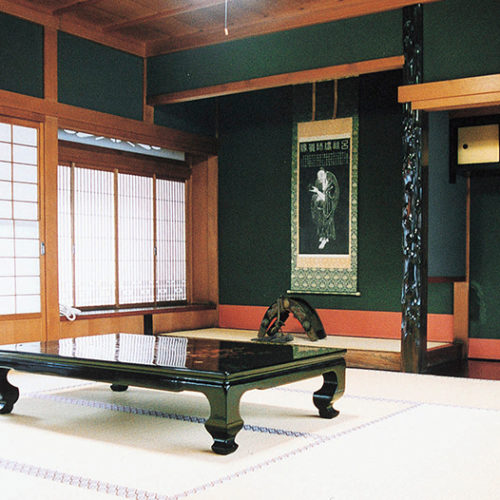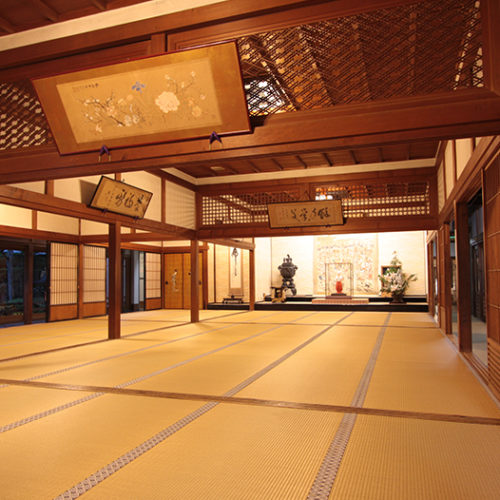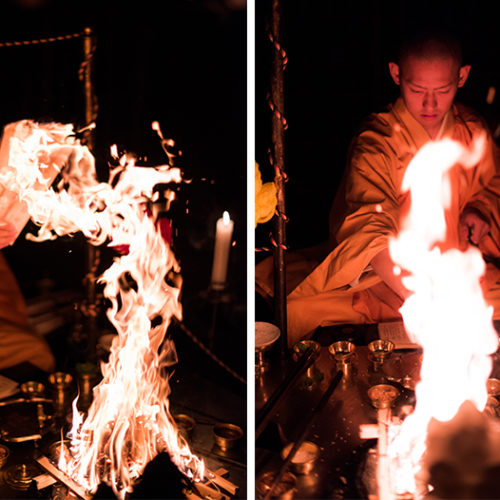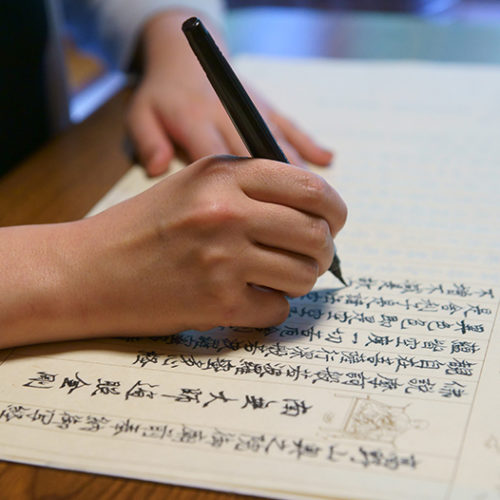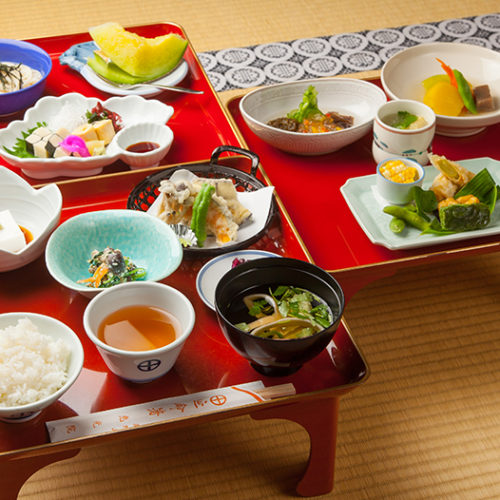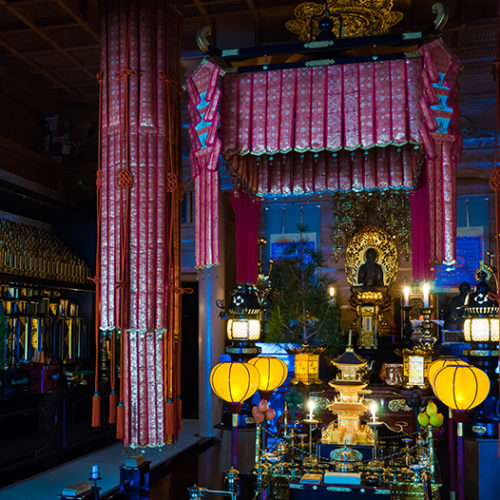The Shukubo Experience
Mr. Monk brings me my dinner in my tatami room, laid out on several red lacquered trays. Everything is miniature, yet exquisite. After dinner, Mr. Monk reappears to lay out my futon.
KOYASAN
Where Monks Make Your Futon
I’m standing at the gates of a temple, reliving a conversation with my Tokyoite friend. You’re going to a shukubo? That means you’re going to stay in a temple and sleep on a futon on the floor. And eat vegetarian food. Why? I’m now asking myself the same question. If the Japanese don’t do it, why should a foreigner?
What the heck. I take a deep breath, step inside the gates, and walk up to the wooden building. There’s a row of slippers laid out. I step out of my shoes and slide into a pair of red slippers, and rest my tired shoes on the shelf.
I look down the long corridor and see a monk at the end. He’s on his hands and knees, polishing the floor with an old cloth. He stops what he’s doing and guides me to the reception area. He doesn’t speak much English, but he’s friendly and we get through the check-in process sans probleme. He shows me to my room, passing by magnificent rock gardens and sliding doors along the way. Mr. Monk also points out the common bath. We’ve gone through such a maze. I’ll never be able to make it back to the entrance, never mind navigate my way to this bath.
My room is a tatami room on the second floor, overlooking one of the inner gardens. Simple and peaceful. Maybe this wasn’t a bad idea, after all. After setting down my travel bag, Mr. Monk tells me that both dinner and breakfast will be served in my room. Sweet. He also tells me that if I like, I can participate in the morning prayers in the main temple. Sure. What time? 6 a.m. Not so sure. I’ll see how I go in the morning.
After stretching out my legs and airing out my travel bag, I set out for the bath with my yukata gown and towel in hand. I get lost but don’t mind, as I’m rewarded with delightful views of rock gardens, with evening shadows growing on the rocks and moss. It’s nice to walk barefoot (I’ve done away with the red slippers – they would’ve been the death of me on those steep stairs) on the hardwood floors, which creak with sounds of history. This temple, like many in Koyasan, is 800 years old. How many people have walked along this corridor? And what kind of people were they? Back in its heyday, many a nobleman and samurai warlord came to Koyasan, and probably stayed at temples like this one.
I find the bath and open the sliding door. I guess I shouldn’t be surprised, but I’m not the only one who had the idea of taking a bath before dinner. I don’t know where the Japanese get the courage to bathe next to a stranger. I take a soak anyway, washing myself before jumping in the big bath. A bit too hot for my liking, but the hot water does seem to do good for my sore muscles. That was a lot of walking for one day. Phew.
After my bath, I circle the corridors a few times again before making it back to my room. Mr. Monk brings me my dinner, laid out on several red lacquered trays. I feel like a princess in an old Japanese film. Everything is miniature – the trays, the dishes, the portions. Miniature yet exquisite. I dig in, and delight in the subtle tastes of dashi and umami. Tofu, soup, tempura, grilled veggies, pickles…Hang on. This is supposed to be vegetarian monk cuisine, right? No, wait. It’s not vegetarian, it’s vegan. I pull out my guide book and read up on shojin ryori. Five flavors, five colors, five techniques. I never realized how many ways you could cook vegetables. And how tasty they could be.
When Mr. Monk comes by to take away the dishes, I ask if the monks here eat this kind of cuisine every day. Vegetarian? No, no. We enjoy good food, he says. Funny that guests staying at the temple eat traditional monk’s cuisine, while the monks eat regular food.
While chuckling at my question, he starts laying out my futon. I brave another question. Where are you from? Kyushu, says Mr. Monk. The big island in the south? Yes, like other monks in this temple. How long do monks stay in Koyasan? One year, two years, sometimes five years. Apparently, monks in the Shingon sect of Buddhism come to Koyasan to be trained. They attend classes at Koyasan University and become apprentices at one of the 100 temples here, until they are no longer considered to be an embarrassment to their masters and deemed worthy of taking on a temple. They may take on their father’s temple, or be given the responsibility for a new temple if they don’t have one to inherit.
With nothing much to do at night, I fall asleep at a bedtime appropriate for school kids. But that helps me get up in time for the morning prayers. I roam the corridors once more until I bump into a monk rushing to get to the main temple, and he leads the way. All the guests are sitting on the floor with their legs folded under them. With much hesitation and difficulty, I follow suit. It’s dark, with only a few candles lighting up the space. Incense is burning somewhere. The head priest starts chanting while banging on a hollow wooden fish-shaped drum. The four other monks join him in monotonous yet resonant harmony.
The first light of day finds its way through the wooden shutters, slowly revealing the ornate Buddha statues, elaborate decorations dangling from the ceiling, and metallic carvings in the shape of lotus flowers. My legs are dying, and I’ll never be able to stand up again. But I revel in the magic ambience of the rhythmical chants, occasionally interrupted by the surprising clash of cymbals.
One of the monks says something in Japanese and one of the guests gets up. He walks up to the front and puts his hands together in prayer. He picks up a pinch of incense bark, holds it up to his forehead, then sprinkles it into a pile of hot ashes. He repeats this twice, then goes back to his seat. I wiggle my toes and massage them intently before my turn comes, fearing that my feet will collapse under me the moment I stand up. The wiggle and massage seemed to help avoid a calamity, but I have the most severe case of pins and needles as I walk up to the front. But catching a glimpse of the gracefully austere ceremony, I forget my pain. The power of prayer.
Back in my room, breakfast transforms me once again into a princess. A princess eating vegan food on miniature red trays in a temple after morning prayers. An unexpected yet delightful end to the shukubo experience.
If you’re up for the challenge of staying in a shukubo, here are a few recommendations:
Hongakuin: For a simple, authentic shukubo experience
Real monks will look after your every need, be it checking in, laying out your futon, serving you dinner, or taking your payment. The head priest was “given” to the temple as a child, when he became seriously ill, his father believing that his son’s life would be saved in exchange for his sacrifice. The same head priest is now the Chief Director of the Shingon sect, and has also released a CD with his chants. The rock gardens and screen paintings here are breathtaking.
http://www.hongakuin.jp
618, Koyasan Koya-cho, Ito-gun,Wakayama-ken
TEL:0736-56-2711
Fukuchiin: The luxury temple
This temple boasts some extraordinary rooms. If you want to live like a shogun, be sure to ask for Room 12, which has a head-on view of Fukuchiin’s best Japanese rock garden and gold leaf walls. If you can’t get enough of the Japanese aesthetic, ask for Room 19, which juts out into a geometric and monochromatic rock garden. This temple also features the only onsen hot spring in town. Enjoy a delicious cup of coffee looking out at the largest rock garden, served by a monk that can greet guests in over 15 languages.
http://fukuchiin.com
657, Koyasan, Koya-cho, Ito-gun, Wakayamaken
TEL:0736-56-2021
Ekoin: For those who don’t want to be lost in translation
Head priest Kobayashi is young and hip. And he wants foreigners to understand what Koyasan is about. Guests can enjoy meditation, morning prayers, night tours in the cemetery – all in English to get the full Koyasan experience. At Ekoin, nothing is lost in translation.
http://www.ekoin.jp
497 Koyasan, Koya-cho, Ito-gun, Wakayama-ken
TEL: 0736-56-2514
by Maho Harada
July 05, 2016
The Shukubo Experience information
Address
Recommended restaurants
Hamadaya (Tofu Café) - 444, Koyasan, Koya-cho Ito-gun, Wakayama - TEL:0736-56-2343
Hanabishi (Traditional Japanese) - 769, Koyasan,Koya-cho, Ito-gun, Wakayama-ken - TEL:0736-56-2236
Ogura (Udon & Soba) - 53, Koyasan,Koya-cho, Ito-gun, Wakayama-ken - TEL:0736-56-3302
Koumi Cafe (Café) - 571, Koyasan,Koya-cho, Ito-gun, Wakayama-ken - TEL:090-7758-0805
Miyasan (Izakaya) - 53, Koyasan,Koya-cho, Ito-gun, Wakayama-ken - TEL:0736-56-2827
- TOPSTAYThe Shukubo Experience
- TOPDESTINATIONSKOYASANThe Shukubo Experience
